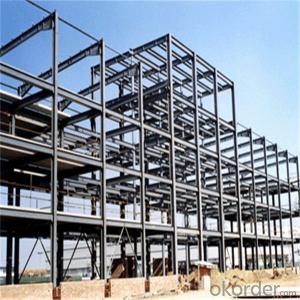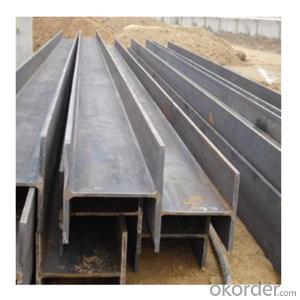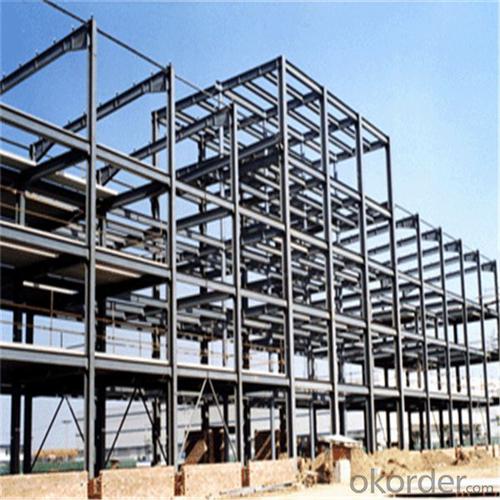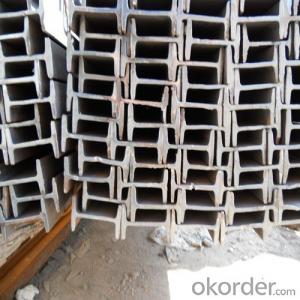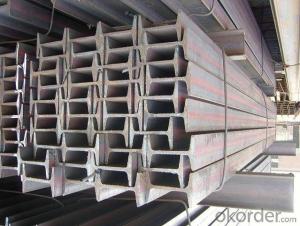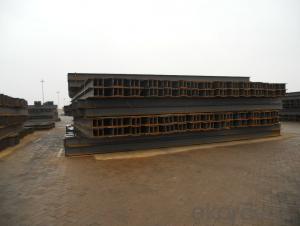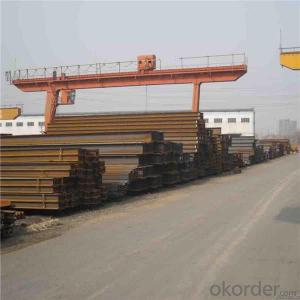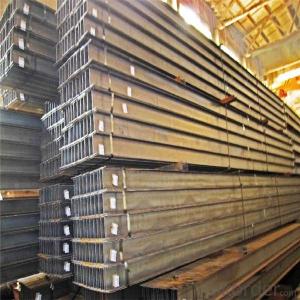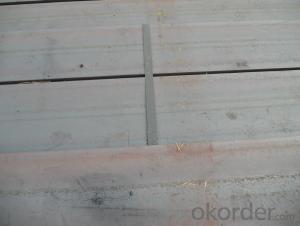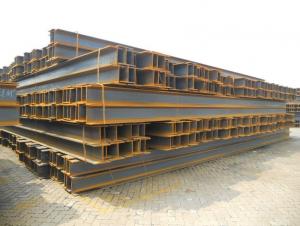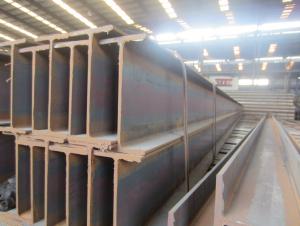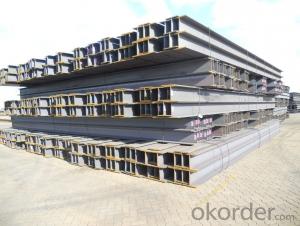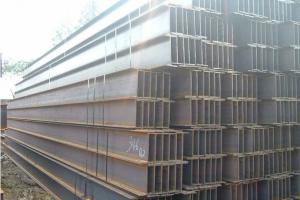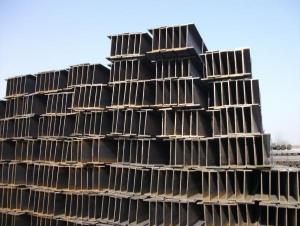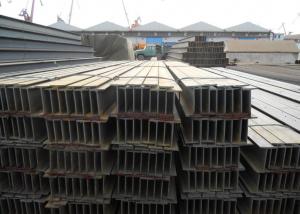European Standard Structural H Steel Beams Price per Kg
- Loading Port:
- Hai Kou
- Payment Terms:
- TT OR LC
- Min Order Qty:
- 100 m.t
- Supply Capability:
- 150000 m.t/month
OKorder Service Pledge
OKorder Financial Service
You Might Also Like
Specification
Quick Detail
OKorder is offering H BEAM at great prices with worldwide shipping. Our supplier is a world-class manufacturer of steel, with our products utilized the world over. OKorder annually supplies products to African, South American and Asian markets. We provide quotations within 24 hours of receiving an inquiry and guarantee competitive prices.
Standard: | ASTM, GB, JIS | Grade: | Q235Q345ss400ss490 | Dimensions: | HM100*100*6*--8#428*407*20*35 |
Place of Origin: | Hebei, China (Mainland) | Brand Name: | JINXI | Type: | Alloy Structural Steel |
Application: | roof beam | Shape: | Beams | price: | competitive |
We can provide qualify goods,competitive price and speedy delivery.
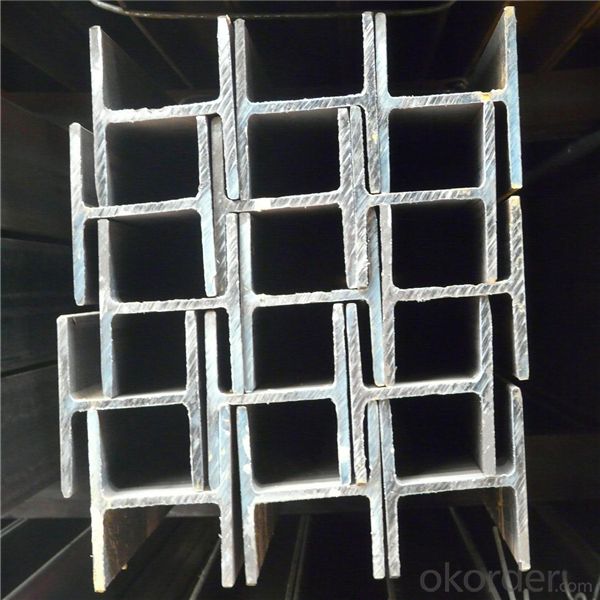
Products Description
Description | High Frenquency Thin-walled H Beam | |
Product Name | H Beam | |
Specification | Height:75-500mm Width:50-250mm | |
Standard | GB700-1998,GB/T1591-1994 | |
Material | Q235B,Q345B | |
Application | a. Bridge and post structures in industry and civil use of steel construction. | |
Certificates | ISO,SGS,BV,TUV,Lloyd | |
MOQ | 20 tons or according to customers’ requirement. | |
Port of Delivery | Tianjin Port of China | |
Remarks | We can provide qualify goods,competitive price and speedy delivery |
Packaging & Delivery
Packaging Details: | Packed with waterproof paper and steel banding. |
Delivery Detail: | 15-25 |
FAQ
1. How can I get some samples?
We are honored to offer you samples. New clients are expected to pay for the courier cost. The samples are free for you.
2 Do you have any certificates?
Our products passed inspection of SGS, FDA, and CE Quality is priority! Every worker keeps the QC from the very beginning to the very end, Quality control department especially responsible for quality checking in each process.
3 Can your factory print or emboss my logo on the goods?
Yes, we can print or emboss the logo on the goods or their packing box.
4 What information should I let you know if I want to get a quotation?
1) The specification of products (length x width x thickness);
2) The temper and alloy.
3) The final product you will use to be made
4 It will be better if you can show us the pictures or design sketch. Samples will be best for clarifying. If not, we will recommend relevant products with details for reference.We usually produce goods based on customers
Samples or based on customers’ picture, logo, sizes etc.
- Q: How do steel H-beams compare to timber beams in terms of maintenance requirements?
- Steel H-beams have significantly lower maintenance requirements compared to timber beams. Steel is resistant to rot, termites, and other pests, which often plague timber beams. Additionally, steel is less prone to warping, cracking, and splitting, ensuring a longer lifespan and reducing the need for regular maintenance and repairs.
- Q: What are the different connection methods for steel H-beams?
- Depending on the specific application and structural requirements, steel H-beams can be connected using various methods. Here are some commonly used techniques: 1. Welding: Welding is a popular method that involves joining H-beams using techniques like arc welding, gas metal arc welding (MIG), or shielded metal arc welding (stick welding). This creates a strong and rigid connection between the beams. 2. Bolting: Another commonly used method is bolting, where high-strength bolts and nuts are used to connect H-beams. This allows for easy disassembly and reassembly when needed. It's important to ensure the proper bolt size, torque, and spacing to achieve a secure connection. 3. Riveting: Although an older method, riveting is still used in certain cases. It involves drilling holes in the beams and inserting rivets, which are then hammered or compressed to secure the connection. Riveting provides a strong and durable connection, but it is more time-consuming compared to welding or bolting. 4. Moment connections: For structural applications requiring high rigidity and load-bearing capacity, moment connections can be used. These connections are designed to transmit both shear and moment forces between the beams, providing greater stability and resistance to bending moments. 5. Composite connections: In some instances, steel H-beams may need to be connected to other materials such as concrete or timber. Composite connections involve combining the properties of different materials to enhance structural performance. This can be achieved using shear connectors, adhesive bonding, or mechanical fasteners. It's important to note that the choice of connection method depends on factors like load requirements, structural design, available equipment, and the expertise of the construction team. Proper engineering analysis and design are crucial to ensure a safe and efficient connection method for steel H-beams.
- Q: Can steel H-beams be used in railway or subway construction?
- Yes, steel H-beams can definitely be used in railway or subway construction. H-beams, also known as I-beams, are widely used in the construction industry due to their strength and durability. They are commonly used as load-bearing components in various structures, including bridges, buildings, and railway or subway tracks. In railway or subway construction, steel H-beams are typically used as support beams for elevated tracks or platforms. These beams provide the necessary structural integrity and stability to carry the weight of trains and passengers. They are designed to withstand heavy loads and high pressure, ensuring the safety and reliability of the railway or subway system. Steel H-beams offer several advantages for railway or subway construction. Firstly, they have a high strength-to-weight ratio, meaning they can support heavy loads while being relatively lightweight themselves. This is crucial in railway or subway construction, as it allows for the efficient use of materials and reduces the overall weight of the structure. Additionally, steel H-beams are resistant to deformation and corrosion, making them suitable for long-term use in outdoor and underground environments. They can withstand the harsh conditions associated with railway or subway systems, such as exposure to weather, vibrations, and moisture. Furthermore, steel H-beams are readily available and cost-effective, making them a preferred choice for construction projects. They can be easily manufactured, transported, and installed, saving time and resources during the construction process. In conclusion, steel H-beams are commonly used in railway or subway construction due to their strength, durability, and cost-effectiveness. They provide the necessary support and stability for elevated tracks or platforms, ensuring the safety and reliability of the transportation system.
- Q: How do steel H-beams compare to other structural beams?
- Considered as one of the most efficient and effective structural beams available, steel H-beams possess several advantages over other beam types. Their high strength-to-weight ratio, versatility, and cost-effectiveness are among the reasons for their wide recognition. To begin with, the steel H-beams' exceptional strength-to-weight ratio grants them remarkable durability while remaining relatively lightweight. This characteristic enables the construction of sizable and intricate structures without burdening them with excessive weight. Consequently, the overall cost is reduced, and transportation and installation become more manageable. Moreover, the unique shape of steel H-beams ensures excellent load-bearing capabilities. The H shape evenly distributes weight along the beam, enabling it to support heavy loads and resist bending or twisting. This makes them a perfect choice for structures requiring long spans or carrying substantial weights, such as bridges, skyscrapers, and industrial buildings. Additionally, steel H-beams demonstrate high versatility and adaptability. They can be easily customized and fabricated to meet specific design requirements, allowing for the creation of structures in various shapes and sizes. Furthermore, they can be joined together using welding or bolting techniques, providing construction flexibility and allowing for future modifications or extensions. Another advantage of steel H-beams lies in their cost-effectiveness. Although initial costs may be higher compared to alternative materials, the long-term benefits greatly outweigh the investment. Steel possesses impressive durability and corrosion resistance, leading to reduced maintenance and replacement expenses over time. Additionally, its recyclability contributes to its environmentally friendly nature. In conclusion, steel H-beams offer numerous advantages over alternative structural beams, including their high strength-to-weight ratio, versatility, and cost-effectiveness. These benefits make them a favored choice in various construction projects and contribute to their widespread use in the industry.
- Q: What does H steel.R represent?
- It should mean the rounded radius of H steel.
- Q: Are steel H-beams prone to bending or warping?
- Steel H-beams are known for their structural integrity and resistance to bending or warping. The design of H-beams, with their shape resembling the letter "H", provides excellent load-bearing capabilities, making them highly resistant to bending forces. The flanges of H-beams are wider and thicker than those of standard I-beams, allowing them to distribute weight evenly and resist bending or warping under heavy loads. Additionally, H-beams are typically made from high-strength steel, which further enhances their resistance to bending or warping. Therefore, it can be concluded that steel H-beams are not prone to bending or warping, making them a popular choice for various construction and structural applications.
- Q: Can steel H-beams be fire-resistant?
- Yes, steel H-beams can be fire-resistant. Steel is inherently fire-resistant as it has a high melting point and does not combust. However, the fire resistance of steel H-beams can be further enhanced by applying fireproof coatings or using intumescent paints. These coatings can provide an additional layer of protection by insulating the steel from the heat of the fire, delaying or preventing its structural failure. Additionally, the design and construction of the building can also play a role in ensuring the fire resistance of steel H-beams, such as implementing fire-rated barriers and compartmentalization to contain the spread of fire. Overall, while steel H-beams are naturally fire-resistant, incorporating additional fire protection measures can further enhance their performance in the event of a fire.
- Q: Can steel H-beams be customized to specific lengths?
- Yes, steel H-beams can be customized to specific lengths. Steel H-beams are commonly used in construction and are available in various standard lengths. However, if the standard lengths do not meet the specific requirements of a project, they can be customized to the desired length. This can be done by cutting the beams to the required length and then welding or bolting the ends together to create the desired length. Customizing the length of steel H-beams allows for more flexibility in construction projects and ensures that the beams fit perfectly for a specific application.
- Q: Can steel H-beams be used in the construction of transportation hubs or terminals?
- Certainly, transportation hubs or terminals can indeed incorporate steel H-beams in their construction. Due to their remarkable strength and durability, steel H-beams are extensively utilized in various construction endeavors. Their exceptional load-bearing capabilities render them perfectly suited to provide support for heavy structures like transportation hubs or terminals. H-beams are frequently employed in the construction of bridges, airports, railway stations, and other transportation infrastructure due to their versatility, which facilitates efficient and cost-effective construction through easy fabrication and installation. Moreover, steel H-beams exhibit commendable resistance to both corrosion and fire, guaranteeing the enduring longevity and safety of the transportation hub or terminal. Overall, owing to their structural integrity and suitability for transportation hub or terminal projects, steel H-beams have gained substantial popularity within the construction industry.
- Q: Can steel H-beams be used in agricultural buildings?
- Indeed, agricultural buildings can make use of steel H-beams. These H-beams, known for their robustness and endurance, are frequently employed in construction. They offer the essential structural reinforcement and stability that agricultural buildings demand. Moreover, steel H-beams possess resistance against pests, decay, and fire, rendering them fitting for agricultural settings. Their adaptability permits a wide range of design possibilities, accommodating diverse sizes and arrangements of agricultural buildings. In essence, steel H-beams present a dependable and effective option for the construction of agricultural buildings.
Send your message to us
European Standard Structural H Steel Beams Price per Kg
- Loading Port:
- Hai Kou
- Payment Terms:
- TT OR LC
- Min Order Qty:
- 100 m.t
- Supply Capability:
- 150000 m.t/month
OKorder Service Pledge
OKorder Financial Service
Similar products
Hot products
Hot Searches
Related keywords
